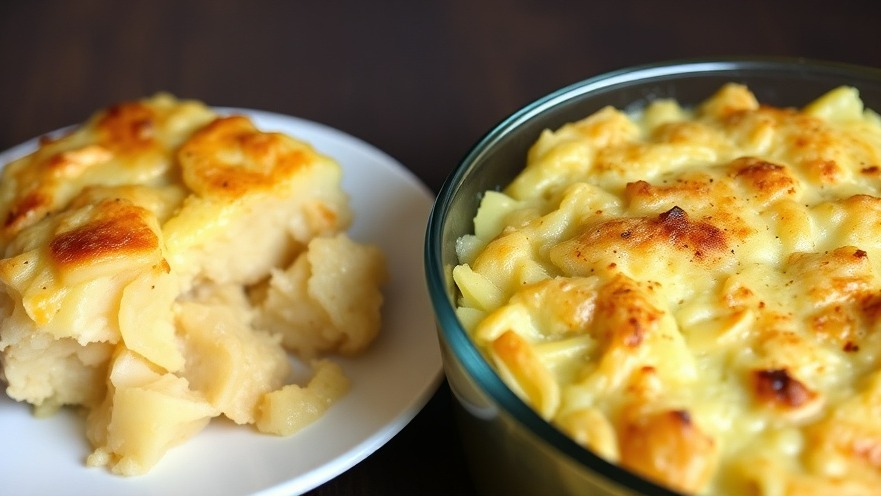
Understanding Kugel: More than Just a Dish
Kugel, a traditional Jewish dish, has a rich history intertwined with cultural significance and community bonding. Originating from Ashkenazi Jewish communities, this dish has evolved from its simple roots into a beloved staple at family gatherings and festive occasions. Kugel is primarily a baked pudding or casserole made from three fundamental ingredients: eggs, fat, and starch, often prepared with egg noodles, rice, or potatoes.
The Heart of Kugel: Ingredients that Matter
At its core, kugel is about connection—between family members gathering around a table and between generations sharing recipes. Essential ingredients often include cottage cheese, sour cream, and a variety of seasonings like cinnamon for a sweet version. Sweet lokshen kugel—a noodle variant—often incorporates raisins and can easily be adapted with various dried fruits, making it versatile and autumn seasonal friendly.
Cultural Significance: What Kugel Represents
The tradition of serving kugel during Jewish holidays, particularly Shabbat and Shavuot, highlights its cultural importance. As noted in culinary traditions, Jews often prioritize dairy foods during Shavuot to commemorate the giving of the Torah. Kugel fits beautifully into this observance, serving both as a metaphor for nourishment and as a culinary vessel connecting generations through shared recipes.
Making Kugel Your Own: Personalization and Adaptation
One of the beautiful aspects of kugel is its capacity for personalization. While classic recipes call for specific ingredients, feel free to explore your creativity. As seen in recipes like Grandma Rose's Jewish Noodle Kugel, the addition of various fruits and nuts not only enhances flavor but also adds a personal touch that reflects individual family traditions. Consider seasonal ingredients, such as fresh apples in the fall, to invoke local flavors and nostalgia.
Why Businesses Should Promote Cultural Dishes
For concierge medical practices aiming to enhance community engagement, promoting culturally-significant dishes like kugel can be beneficial. Hosting cooking classes or demonstrations can create a space for patients to connect, enrich their cultural experiences, or engage with health topics around nutrition. This not only fosters community but also reinforces a practice’s commitment to holistic patient care.
Concluding Thoughts: The Call to Explore Culinary Traditions
In moments of shared meals, we cultivate community and connection. Therefore, take the opportunity to experiment with kugel in your practice. Organize potluck events or encourage patients to share their kugel recipes. The more we connect over food, the stronger our understanding of cultural bonds becomes.
Ready to enhance your practice by forging deeper connections through culinary traditions? Consider arranging a cooking event or workshop where patients can contribute their favorite kugel recipes!
 Add Row
Add Row  Add
Add 






Write A Comment